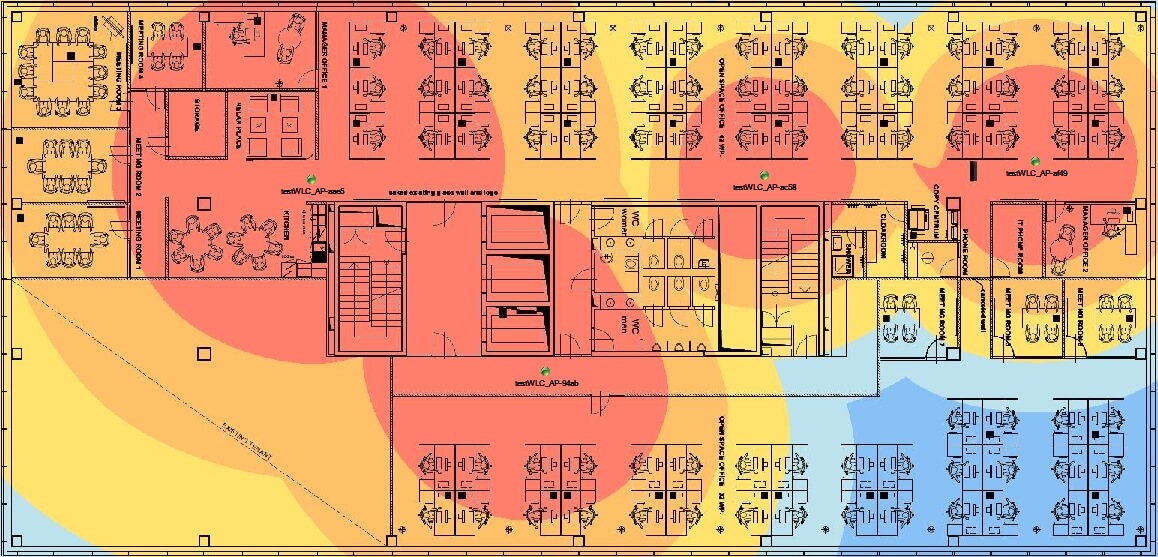In terms of transmission rates and bandwidth, Wi-Fi may still lag behind standard and Fibre Optic cable options, but its flexibility and ease of use, combined with recent advances in security, means Wi-Fi is still a very popular and valuable networking solution for all kinds of business environments.
In general, Wi-Fi infrastructures are used to augment conventional wire-based topologies -- for example, relaying numerous devices to existing cable networks, which is particularly useful for organisations with large numbers of laptops, printers and a mobile, hot-desk mode of staff deployment.
However, wireless technology also comes to the fore where conventional cable topologies are uneconomical or are technically incapable -- such as where the cable length required is too expensive. A prime example is the use of directional Wi-Fi technology to integrate nearby sites with an organisation’s main infrastructure when there are physical obstacles to cable connection.
Wireless Heat Mapping solutions help us determine the exact points within an area to place an access point, thus allowing the greatest network coverage and transparency.
Whether it is a stand-alone Wi-Fi network solution or an adjunct to an existing cable network, our engineering team is fully qualified and highly experienced in every aspect of the project, including:

Heatmapping: Identify the location of a connected client